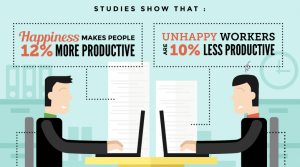For HR Professionals and Managers, year-end can mean painful performance review time. And this is exacerbated if you are one of the 52% of companies that conducts annual reviews. Why? Because you’re forced to remember everything Tim from financial operations did since last year at this time. And that is ridiculous! You only see the guy once a month.
Add in the fact that you have to do this with 10, 20, 30, 100 employees and you start seeing why companies like General Electric, Accenture and Microsoft are dropping the annual performance in favor of something even better. Microfeedback.
Well, that’s what we call it anyway. Other people call it “building a performance culture” or “consistent feedback” or just regular feedback. No matter what you call it, it’s changing the way companies, large and small, look at performance.
So what does this trend mean for you during annual performance review time? Well, if you’re reading this article, chances are, you’re procrastinating and trying to find some way, ANY way, out of this annual performance hell.
“The best time to plant a tree is 25 years ago. The second best time is today.”
Sure you’ve heard that quote. The wisdom inside it is obvious. No you might not be able to get out from under the deluge of annual performance reviews you have to do this year, but you CAN lay the groundwork for why it needs to change before the next time you have to slog through it.
1. Track Your Time.
If you know how much time is spent on annual performance reviews when conducted in one large swath, you can easily calculate how much time and money you will save by implementing microfeedback across the organization. Check out our handy ROI calculator to save you a step or two.
2. Survey Your Employees.
There’s never a better time to ask employees how valuable their reviews are than right after you conduct one. Whether your company subscribes to 360-degree reviews or one-on ones, you can have someone from your department ask immediately after the review how beneficial your employees thought the experience was. Or send out a simple survey via email.
3. Do Productivity Checks Post-Review.
Does productivity shoot up? Does it go down? What do your retention numbers look like? This is all information that can be used to make a case for more consistent feedback. Don’t forget to check your own productivity, after all, it might be tough to get your regular work done with 100 reviews due before Christmas.
4. During Your Reviews With Employees:
Ask them what they need from you to do their job better (ask other managers to do the same). I’ll bet you $ 500 they say “more feedback” 7 out of 10 times. Document this feedback to prove to your executive team that feedback is a great choice when offered more consistently to improve productivity, engagement, and morale.
Business & Finance Articles on Business 2 Community(37)





